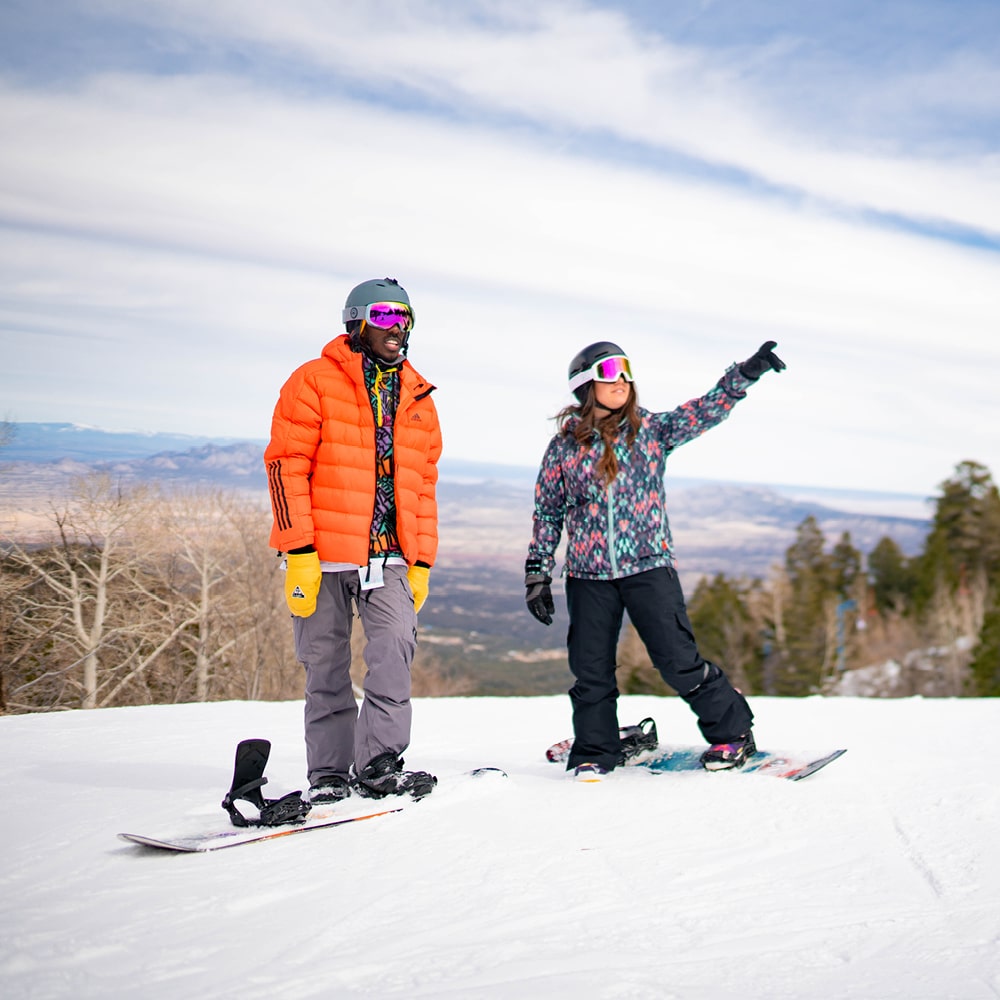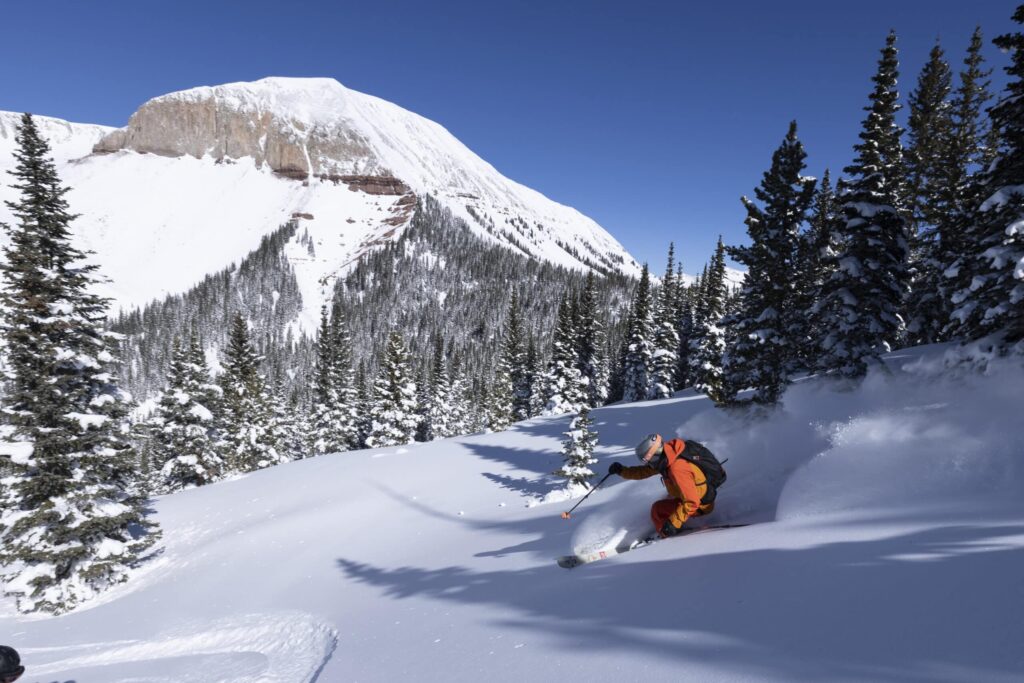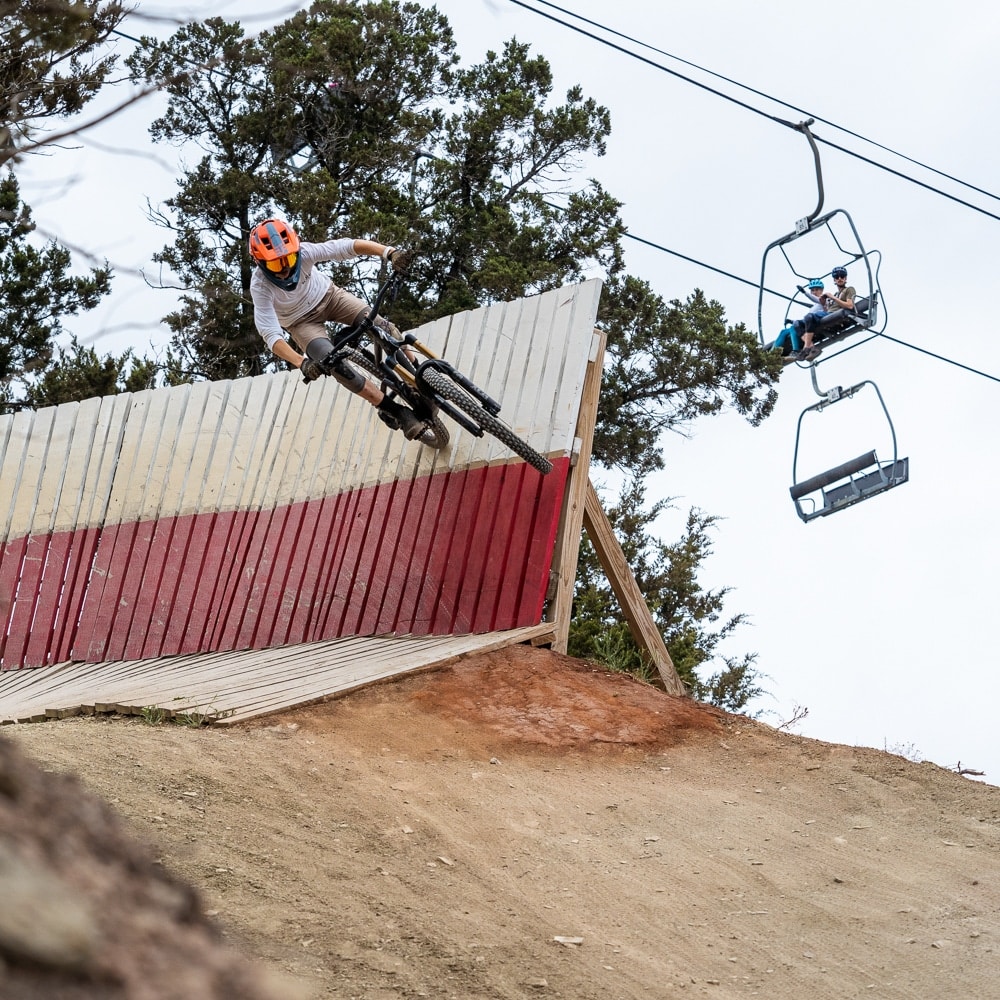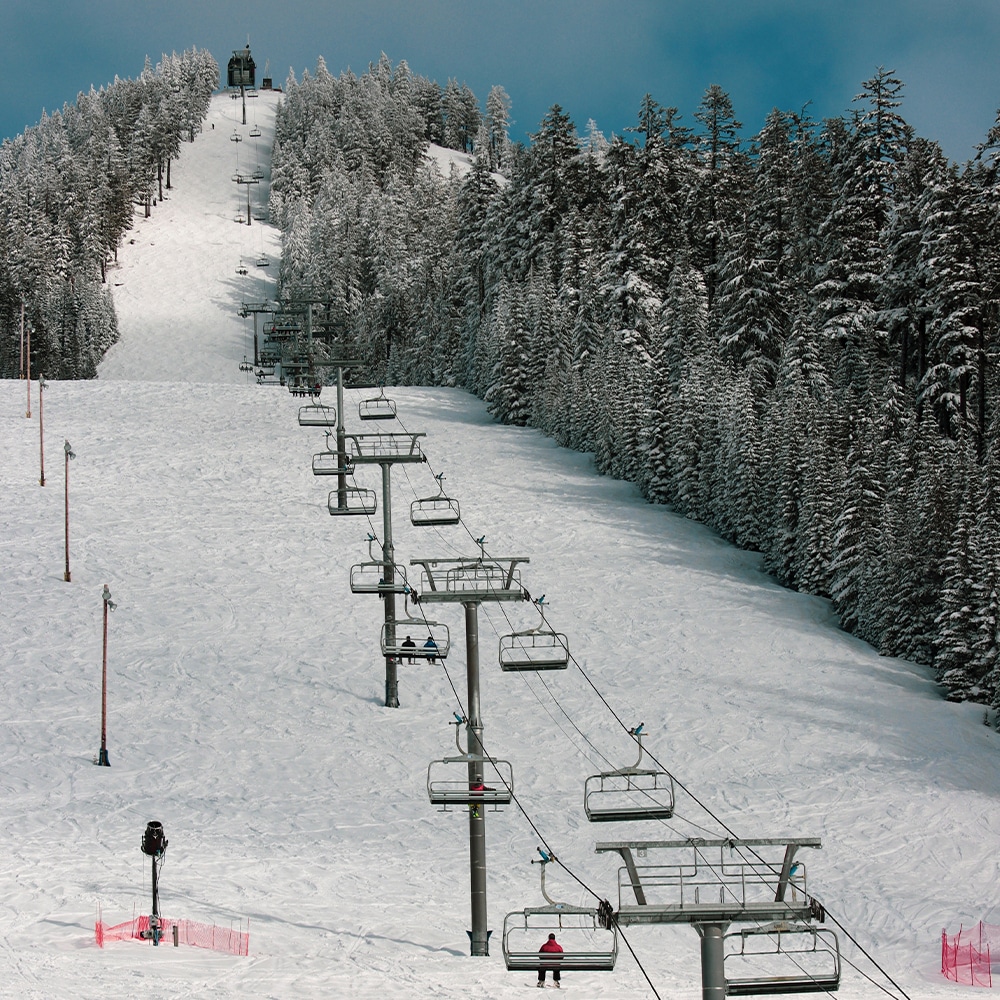Purgatory Resort welcomes the newest member of its ski patrol team. Ember, an 8-week-old black Labrador retriever, is training to join Purgatory’s avalanche search and rescue team as an avalanche rescue dog. She’ll help keep winter visitors to Purgatory and the surrounding San Juan mountains safe.
Ember comes from Bristlecone Avalanche Rescue K9’s (B.A.R.K.). Formed in 2016, this organization is a 501c3 nonprofit which trains and supports working or retired avalanche rescue dogs. Lida, Carson, and the new pup Ember come from B.A.R.K. which is based at Purgatory Resort.
Purgatory ski patrol director and EMT-IV, Blayne Woods is Ember’s handler. Avalanche dog handlers like Blayne are typically members of Search and Rescue. They already have extensive first aid and backcountry skills including avalanche coursework and certifications.
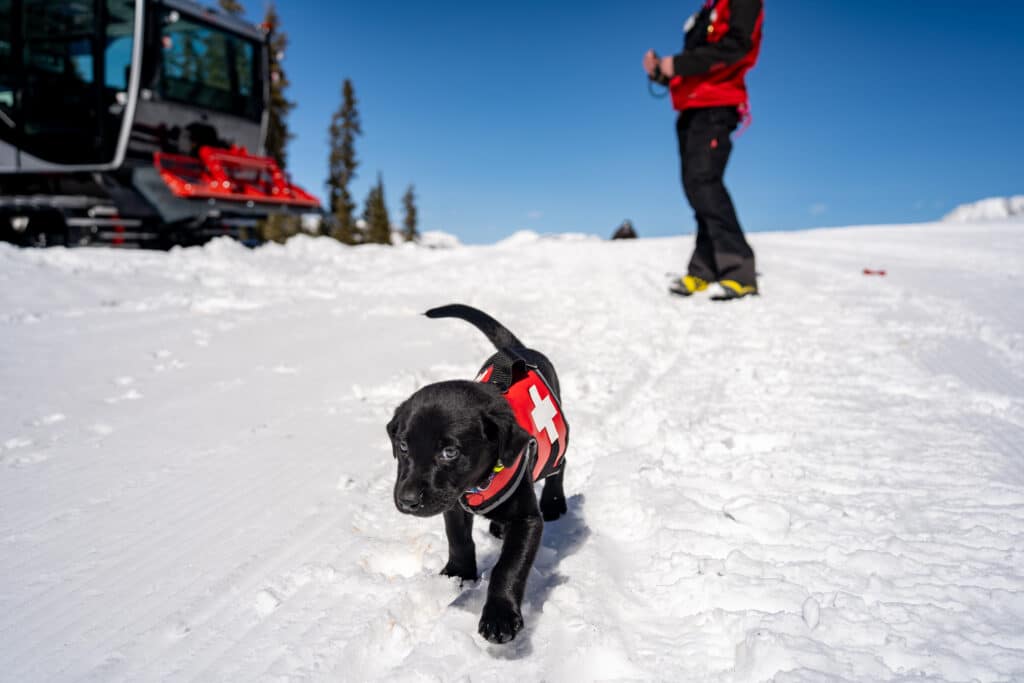
Why are avalanche dogs important?
“Speed is critical in avalanche rescues because victims have little chance of survival if they are buried for 30 minutes or more,” explained Woods. “In five or ten minutes, a trained avalanche dog can search an area the size of a football field. By contrast, it would take a person about 4 hours to search the same area. A trained dog team can be the difference between life and death, since chances of survival in an avalanche burial drop after 15 minutes. For a skier stranded on a snowy mountain, avalanche dogs are your best friend.”

How do you train an avalanche dog?
Ember and Blayne will train as a team following the Colorado Rapid Avalanche Deployment (C-RAD) validation protocol for certifying rescue dogs. Full avalanche rescue certification typically takes 2-3 years from puppyhood and it includes both the dog and the handler. A validated team must be able to find two buried human victims and two buried articles of clothing or gear in 40 minutes.
Ember will learn a lot her first year! For example, she’ll start with basics like obedience and how to travel with a skier, then she’ll have to learn to load and unload from the chairlift and how to ride on snowmobiles and in snowcats. Ember’s favorite part will probably be all the practice with hide and seek and finding “victims” and clothing buried in snow caves. This fall Blayne and Ember will travel to Summit County in order to attend a series of training courses with C-RAD, the industry-recognized certifying body in Colorado.
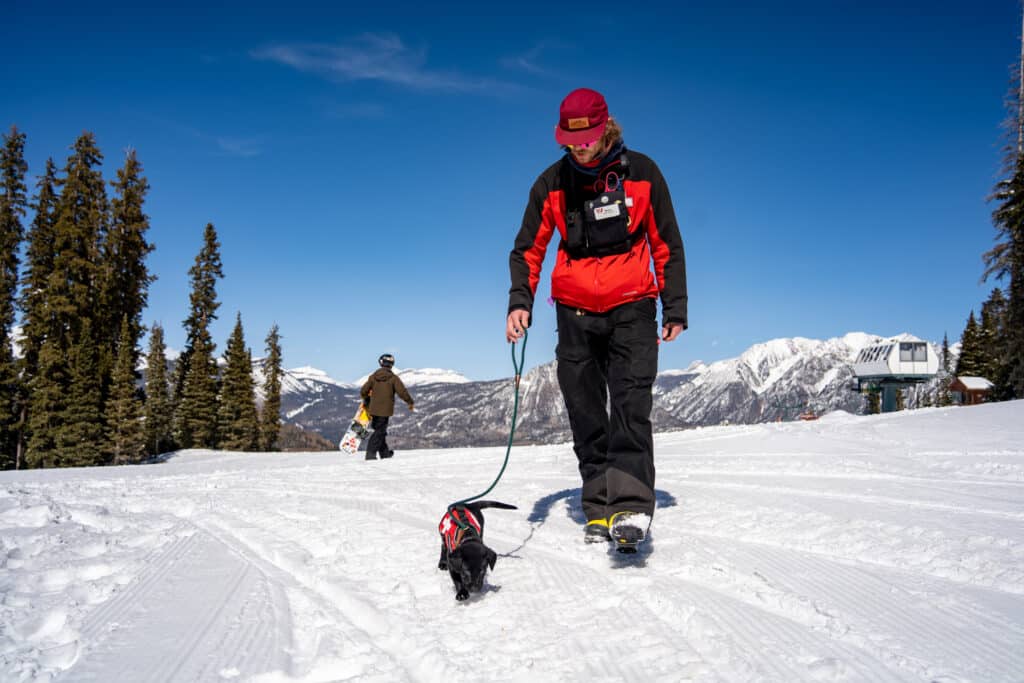
What causes avalanches?
Avalanches occur in the high mountains of Colorado as a result of snow accumulating on steep slopes. If the snowpack becomes unstable, it can suddenly release and rapidly descend downslope. Avalanches often have enough force to destroy structures and uproot or snap off large trees. Colorado’s San Juan Mountains have some of the most complex avalanche terrain and snowpack conditions in the U.S. because of their steep slopes, deep snow and highly fluctuating temperatures,
“We are stoked to welcome Ember to our dedicated team of ski patrol professionals,” said Jim Brantley, Director of Mountain Ops. “Helping people enjoy our mountain SAFELY is our primary objective. People love dogs, and Avi dogs help raise awareness of the numerous hazards involved with traveling in avalanche terrain. We are proud to partner with B.A.R.K. and we are grateful to them for providing rescue dogs to help our patrollers work more effectively.”
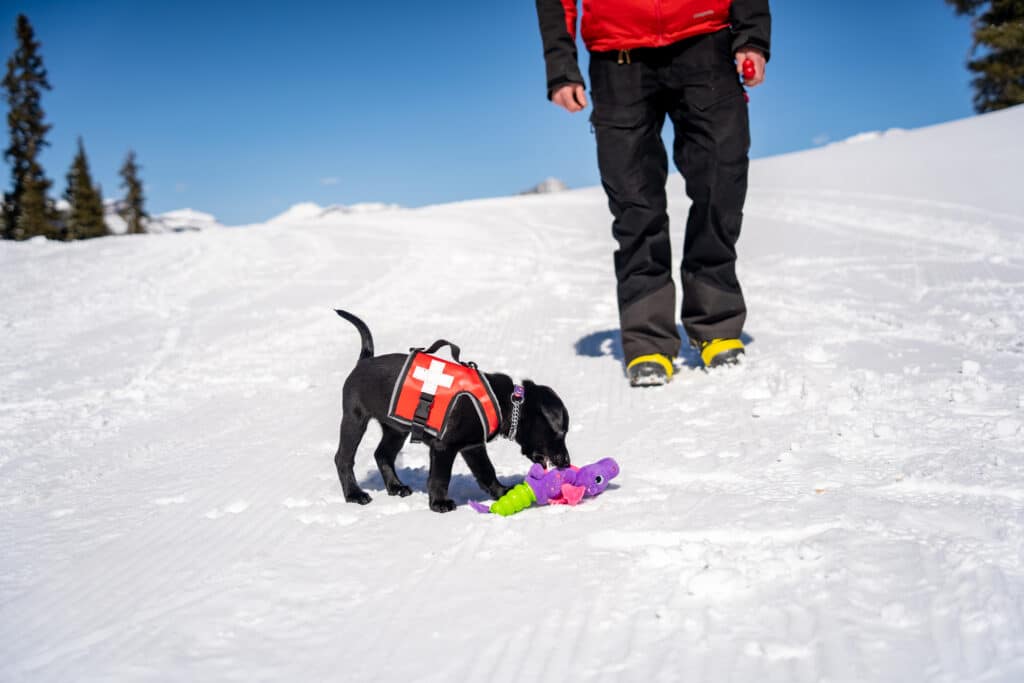
How does Purgatory prepare for avalanche danger?
Purgatory’s Snow Safety Program operates throughout the winter season to keep the public and employees safe. Purgatory’s professional ski patrol has trained extensively in avalanche safety. They perform avalanche forecasting and control work on a regular basis, and monitor hazards and protection measures. Outside the eastern boundary of Purgatory Resort, the ski patrol manages several avalanche starting zones. These zone lie in the Monkey Brains, Monkey Gully, Monkey Launch Chutes, Sun Dog, and Columbine Gully areas. It’s critical that skiers and riders respect ski area boundaries and avalanche closure areas.
All backcountry travelers should take an avalanche safety course and should have snow safety equipment. It is also important to always monitor the current forecast and avalanche danger rating at https://avalanche.state.co.us/.







